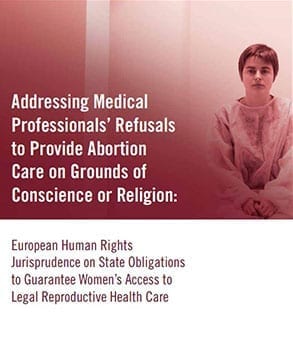Ireland’s Abortion Law: Lives At Risk
Last month, Savita Halapannavar arrived at Galway Hospital 17 weeks into her pregnancy and suffering from severe back pains. Doctors informed her that she was having a miscarriage, and then, over a three-day period, denied her repeated requests to terminate her pregnancy as her condition worsened. The doctors told her they couldn’t offer her treatment because they could still detect a fetal heartbeat, even though it was clear that the fetus was not viable.
On October 28, just days after the fetal heartbeat stopped, Savita died of septicaemia, a bacterial infection in her bloodstream.
Savita’s tragic story is not just caused by a hospital failing to provide adequate health care to an individual woman—it is the also directly related to Ireland’s archaic and unclear abortion law. Under Irish law, abortion is only permitted if the pregnancy poses a “real and substantial” risk to a woman’s life, as distinct from a threat to her health.
This explicit differentiation between threats to women’s lives and health leaves doctors terrified of incorrectly administering an abortion when a woman’s health condition has not yet reached that apex of placing her life in immediate danger. Doctors are left to balance women’s lives with their own liberty, as the administration of an unlawful abortion could result in the doctor being imprisoned. Besides, there are no regulations or guidelines that establish criteria for when a condition is sufficiently serious to justify a legal abortion. Instead, such determination is left entirely to the individual medical provider.
In 2010, the European Court of Human Rights condemned the ambiguous effect of Ireland’s abortion law in the case of A, B and C v. Ireland. The court ordered the Irish government to implement a legislative or regulatory framework to provide women with an accessible and effective procedure to determine whether they qualify for a lawful abortion. Thus far, Ireland has failed to abide by the court’s decision and has not yet implemented any such measures. Further exacerbating the murkiness of the law, the government refuses to collect statistics on the number of abortions taking place in Ireland each year—leaving the law’s impact on women’s lives and health unquantifiable.
Savita’s case demonstrates why laws that only permit abortion when there is a threat to the woman’s life are unacceptable. When governments compel doctors to gamble on threats to women’s health until they become dangerous enough to be clearly considered life-threatening, it is inevitable that some women will become casualties.

